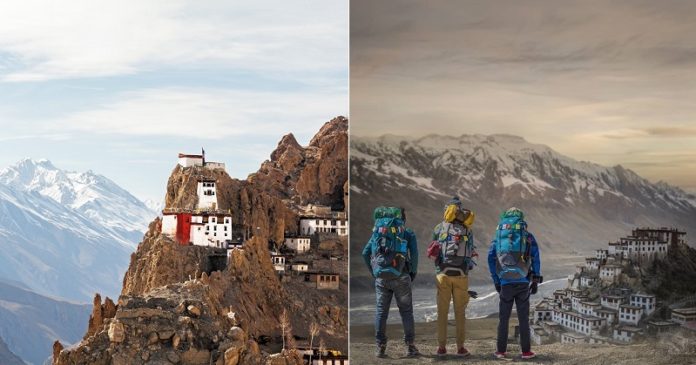
A trekker’s paradise, a peace-seeker’s utopia and a traveller’s wonderland! That is the region of Lahaul-Spiti for you. Nestled in Himachal Pradesh, this region comprises of two former districts Lahaul and Spiti, which were merged later on and are considered the fourth least populous district in India. Apart from all the adventure options, being home to many endangered species, breathtaking trekking routes, scenic views and serenity all around, this district is also known for its monasteries. Mostly situated atop hills/mountains, the monasteries not only give you a tranquil soul-searching experience, but also offer spectacular sights of the mighty Himalayas all around. If you happen to go to this region, exploring the monasteries is a must as they give you an insight about the Buddhist culture and religion along with its splendid history.
We have compiled a list of some of the most popular monasteries situated in the Lahaul-Spiti region, which you should include in your itinerary.
ADVERTISEMENT
1. Key Monastery
This Tibetan gompa is located atop a hill at an altitude of 4,166 metres above the sea level. It is in close proximity to river Spiti and is the biggest monastery of the Spiti valley along with being a religious training centre for the Lamas. The walls of the Key monastery are adorned with paintings and murals which are an example of the 14th century monastic architecture that developed as a result of the Chinese influence. It also has a collection of ancient murals and books which include many Buddha images.
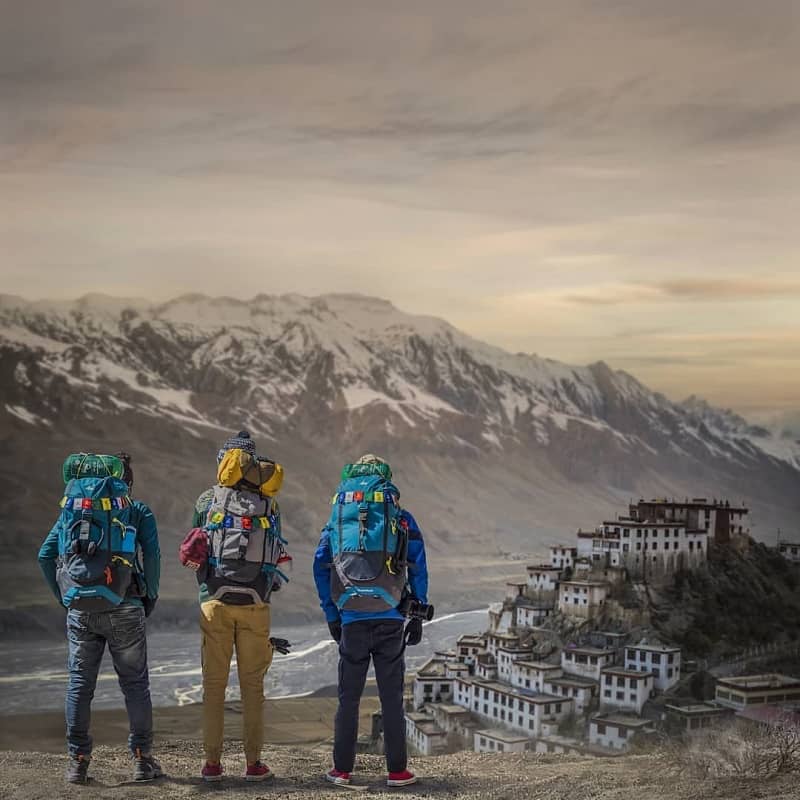
The monastery has three floors. While the first one is underground and is used for storage, the ground floor has a beautifully decorated Assembly Hall and contains many cells for monks. One of the rooms in the lower floor is lavishly painted with murals, thangkas and ancient weapons and is called the Tangyur. This monastery belongs to the Gelupa sect or the Yellow Hat sect of Tibetan Buddhism. The monastery not only provides a breathtaking view of the surrounding areas, but also the route that leads to it.
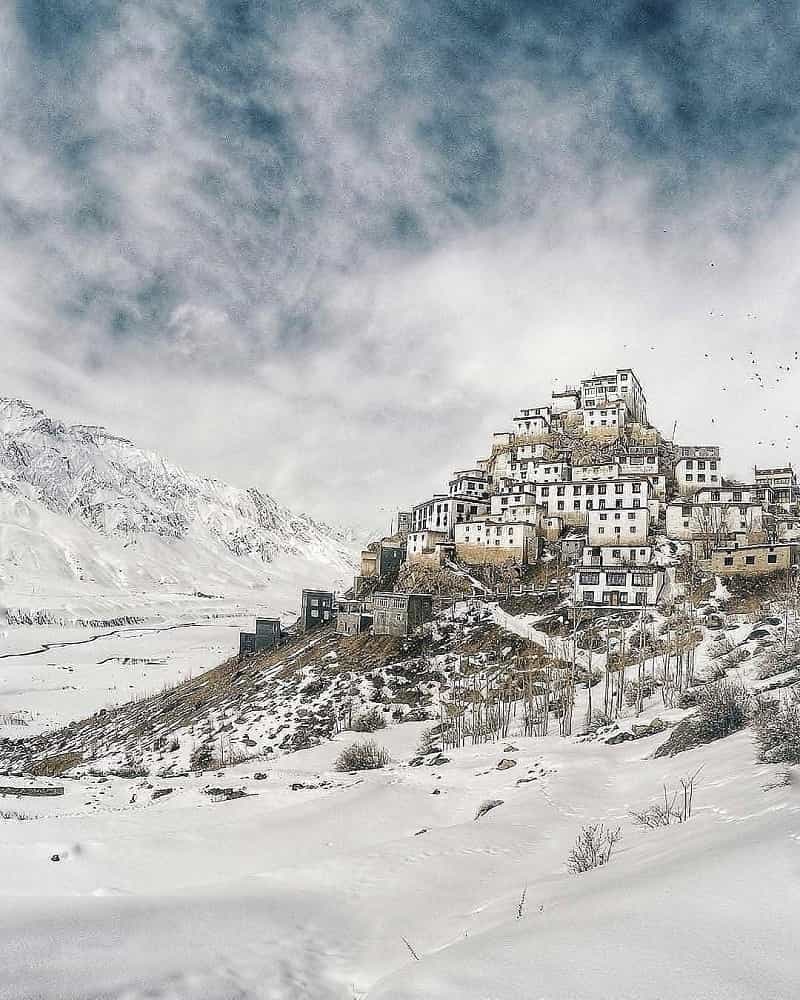
2. Tabo Monastery
Tabo Monastery is protected by the Archaeological Survey of India as a national historic treasure of India. Located in a very arid, cold and rocky of the Spiti region, this monastery lies at the bottom of the bow shaped Tabo village at an altitude of 3,050 metres. This monastery was built in 996 AD (the Tibetan year of Fire Ape) by the Buddhist King Yeshe-O who was also known as the Royal Lama and has undergone a lot of renovations since then.
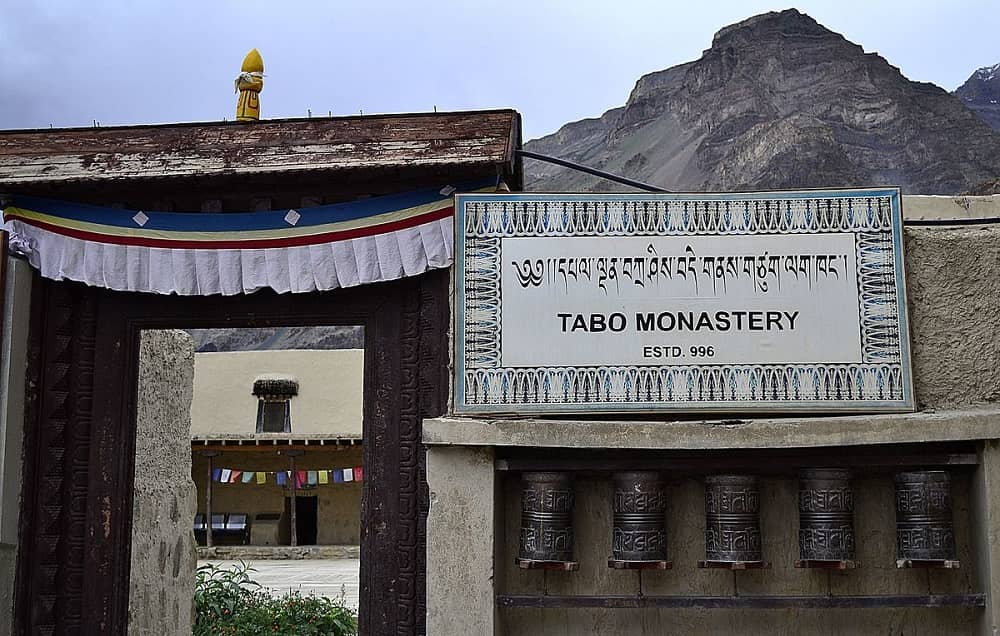
Tabo monastery is the oldest continuously operating Buddhist enclave in both India and the Himalayas. It is known for its fascinating and priceless collection of thangkas, manuscripts, well-preserved statues, frescos and extensive murals which are spread all over the walls. Many frescoes that are displayed on the walls depict tales from the Buddhist pagoda. There are many caves situated above the monastery which are carved into the cliff face, these caves are used by monks for meditation. The caves also bear an assembly hall along with some faded paintings on the rock face.
ADVERTISEMENT
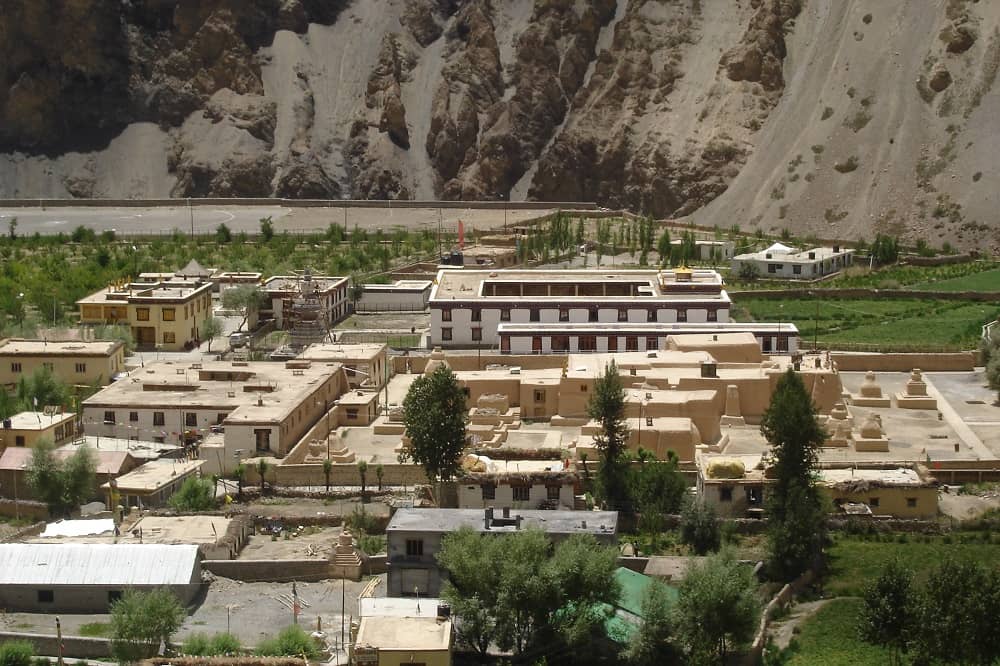
3. Guru Ghantal Monastery/Gandhola Monastery
This monastery is also known as the Gandhola Monastery and lies at an altitude of 3,160 metres, about 18 kms before Keylong in the Lahaul and Spiti district. Located atop a hill above the Tupchiling village at the sacred junction of the Chandra and Bhaga rivers (together forming the Chandrabhaga/Cheban river), this monastery is known for its 7 story tower fort. This monastery is believed to have been founded by Padmasambhava in the 8th century and is now connected with the Drukpa Lineage of the Kagyu school of Tibetan Buddhism.
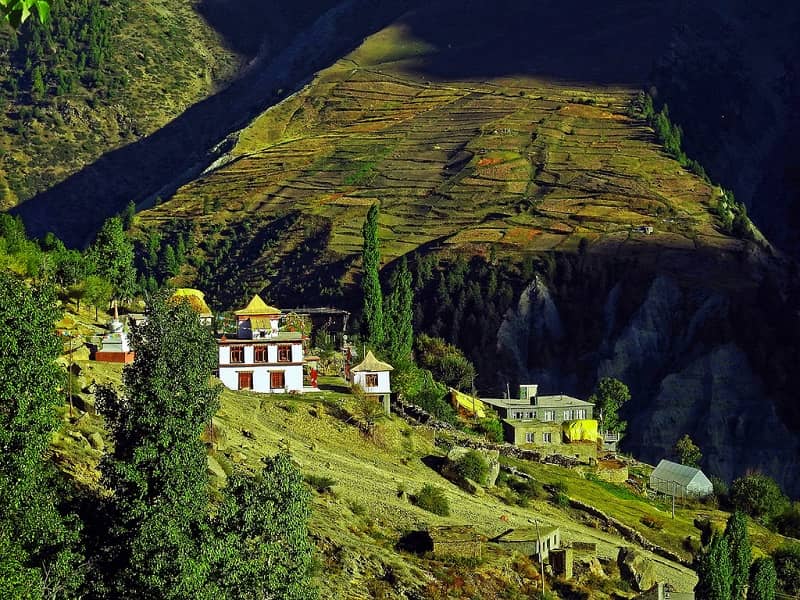
This is the only monastery in this region which is claimed to date back to the era of the Kushan Empire. The monastery is home to distinctive wooden idols of Padmasamhava, Brijeshwari Devi and many other lamas. Also famous in this monastery are Kulu Vase, which is now kept in the British Museum, a damaged marble head of Avalokitesvara, a black stone image of the goddess Vajresvari Devi, a wooden statue of Buddha and a famous lotsava. The seven storey fort mentioned ealier is made of alternate layers of stone and timber and was built by Raja Man Singh, the ruler of Kulu Kingdom is the early 1700s as a castle for local thakur/cheiftain.
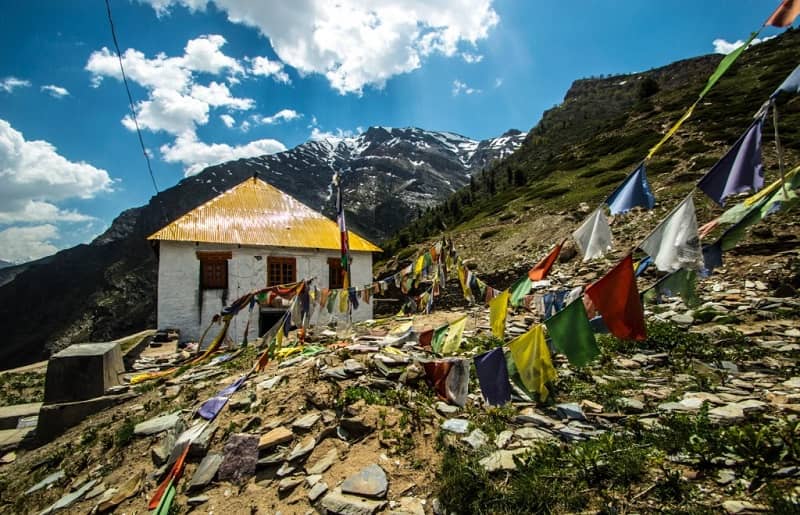
4. Kardang Monastery
This is the most important monastery of the Lahaul valley as the associated village of Kardang was once the capital of Lahaul. Situated at an altitude of 3,500 metres, it rests on a ridge below the 15,000 feet Rangcha Peak. The monastery faces the town of Keylong and lies on the left bank of river Bhaga and has also been featured in one of the episodes of History Channel’s TV series IRT Deadliest Roads. Believed to have been built in the 12th century, this monastery houses a large library of Buddhist literature including the Kangyur and Tangyur scriptures in the Bhotia or Sherpa language. It is home to an exceptional collection of fine thangkas, colorful frescoes and murals, musical instruments like lutes, drums, horns and ancient weapons.
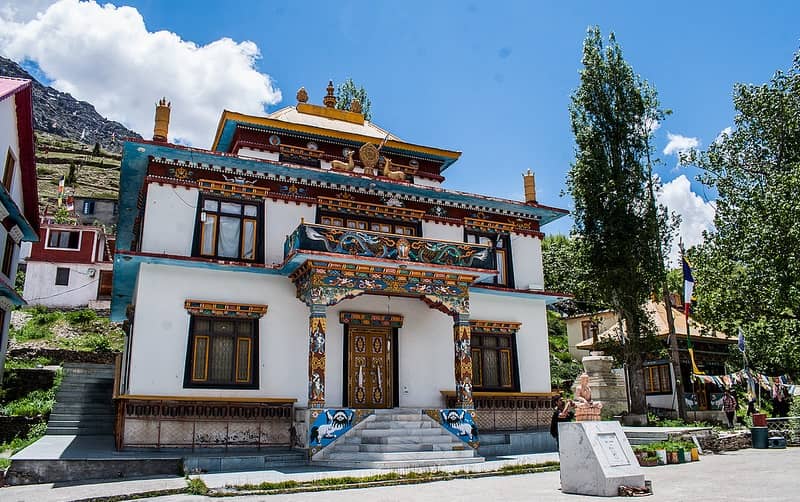
The monastery was renovated in 1912 CE and houses many unique statues and paintings such as Budhha Shakjamuni, Buddha Vajradhara, Buddha Padmasambhava, Heruka Deity, Yunjin Rinpoche, Gampopa, Buddha Avalokisteshwara and Vajrayogini. It also cotains many old cloth paintings like Molarepa stories (story is estimated as a 400 years painting), Tibetan traditional painting, Kalachakra Deity paintings and Buddha Jataka. The monastery also has many traditional painting compositions, old books and commentaries.
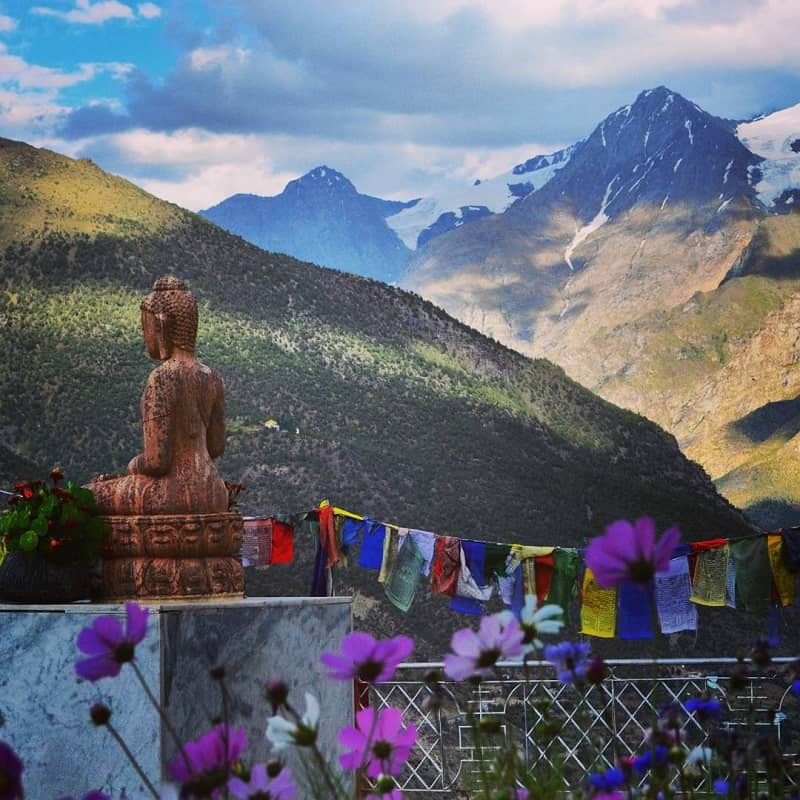
5. Lhalung Monastery
This monastery is also known as the Sarkhang or the Golden Temple and was one of the earliest monasteries founded in the Spiti region. Situated at a height of 3,658 metres, it was founded by the great Tibetan Buddhist Iotswa Rinchen Zangpo who was the king of western Himalayan Kingdom of Guge during the late 10th century CE. Meaning ‘land of the gods’, it is dedicated to Lhalung devta who is said to be the head of all devtas of the valley and emerges from the Tangmar mountain beyond the village.
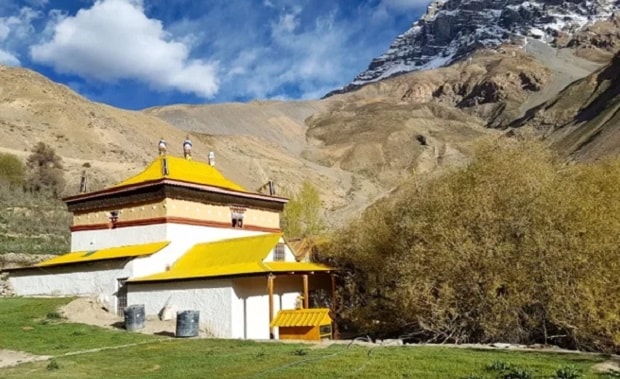
It is also believed that the mountain changes its color depending on the moods of the devtas or deities. While the red color shows anger, yellow depicts happiness. It gets the name ‘golden temple’ as it is home to various gold leaf deities in its shrine, which in itself is an exquisite chamber with walls magnificiently decorated with studded images of more than 50 deities.
ADVERTISEMENT
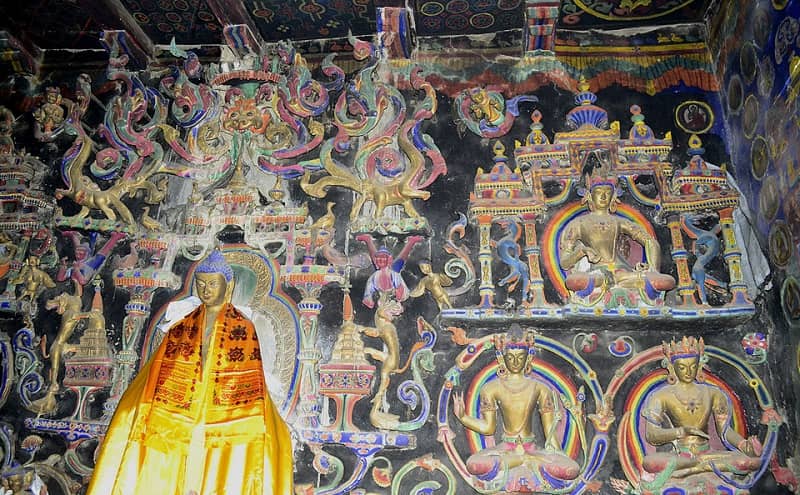
6. Kungri Monastery
This monastery is believed to have been built in the 14th century, around 1330 and the second oldest monastery found in the Spiti region. The monastery comprises of three detached rectangular blocks which face towards the east direction. The inner walls of the gompa are adorned with various silk paintings of Buddhist deities and it houses huge statues and over 300 volumes of Tibetan texts, Kenjur and Tenjur.
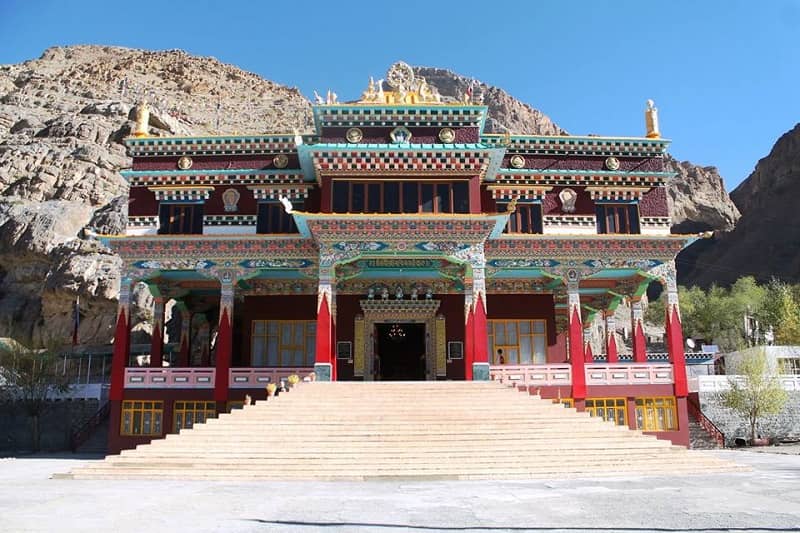
The most prominent feature of this monastery is the traditional ‘Sword/Devil Dance’ which is performed in the month of July by the buzhens of Mud village on the right bank of the river Pin.
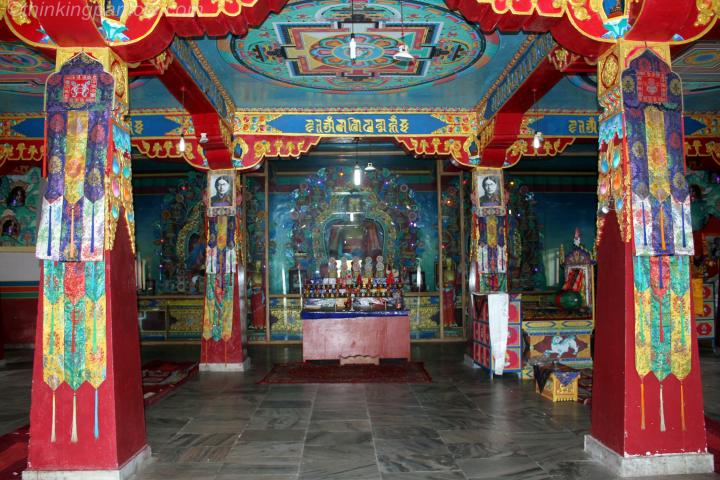
7. Tayul Monastery
Meaning ‘Chosen Place’, this monastery was founded by the Drugpa Lama, Serzang Richen of the Kham region of Tibet in the 17th century while making the meritorious circumambulation of the holy peak Drilburi. The monastery lies in the Bhaga valley in Spiti and is about 6 kms from Keylong. It is home to a hundred million mani wheel which is believed to turn all by itself on special Buddhist occasions. The wheel is believed to have last turned in 1986.
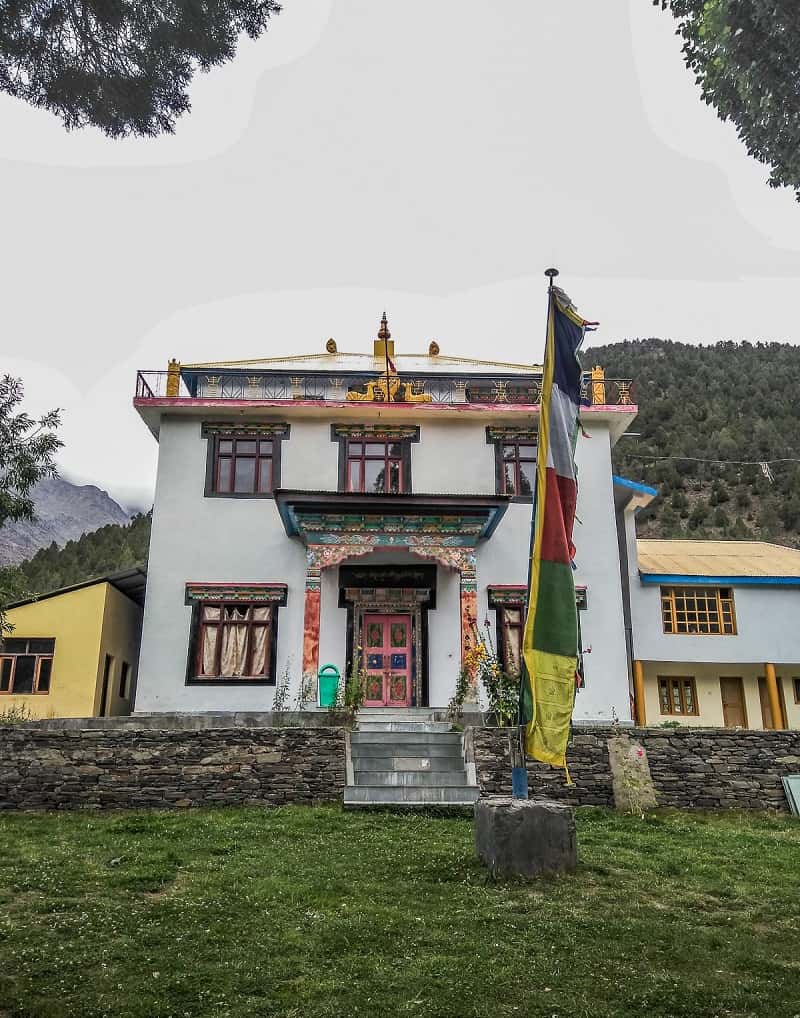
The monastery also houses a library which contains Buddhist Scriptures, the Kangyur, while the walls are decorated with various murals. Another important belonging is a 12 foot statue of Padmasambhava and his two materialisations, Sighmukha and Vijravarashi.
ADVERTISEMENT
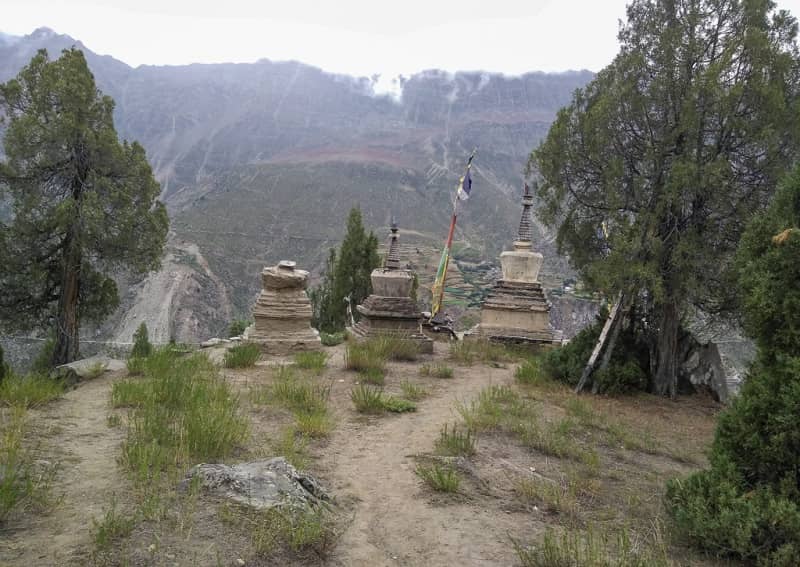
8. Gemur Monastery
This monastery is also located in the Bhaga valley of the Spiti region and is about 18 kms from Keylong. Gemur gompa is located 600-700 yards above the village of Gemur and is believed to be 700 years old. The monastery is known for being home to a sculpture of goddess Marichi Vajaravarahi and dates back to 11-12th century AD.
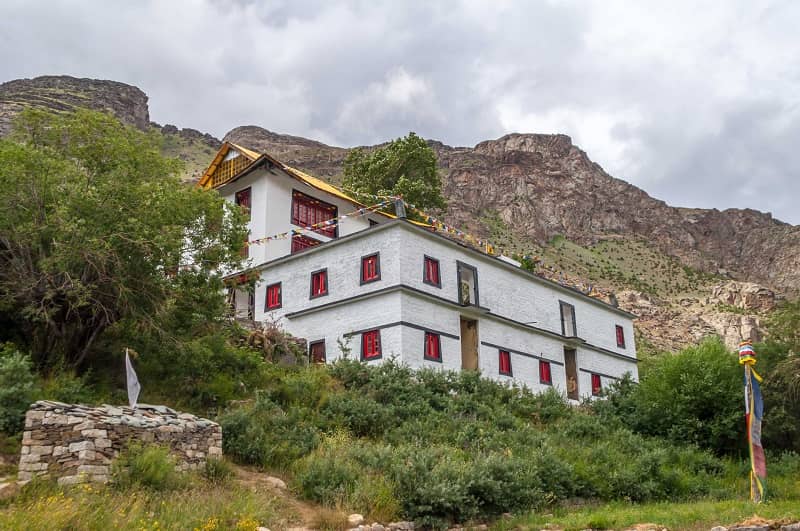
Along with that the gompa also houses ancient Buddhist miniature paintings, wall paintings, stupas statues and Buddhist artificats. This monastery also hold the special devil dance which is carried out in the month of July.
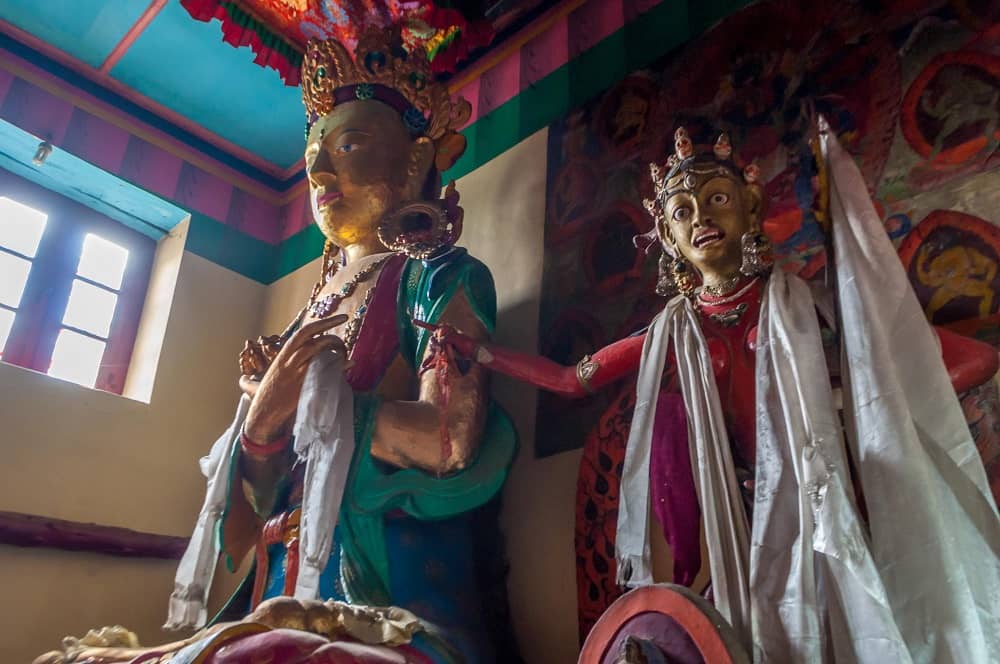
9. Shashur Monastery
The word ‘shashur’ means ‘blue pine’ and this monastery got it name due to the presence of blue pine in patches around it. The gompa belongs to the Drugpa sect of Buddhism and is located around 137 kms from Manali. It is believed to have been built in the 17th century by Lama Deva Gyatsho of Zanskar, a missionary of Nawang Namgyal (the king of Bhutan). Although before the monastery came into being, the area was home to a smaller gompa.
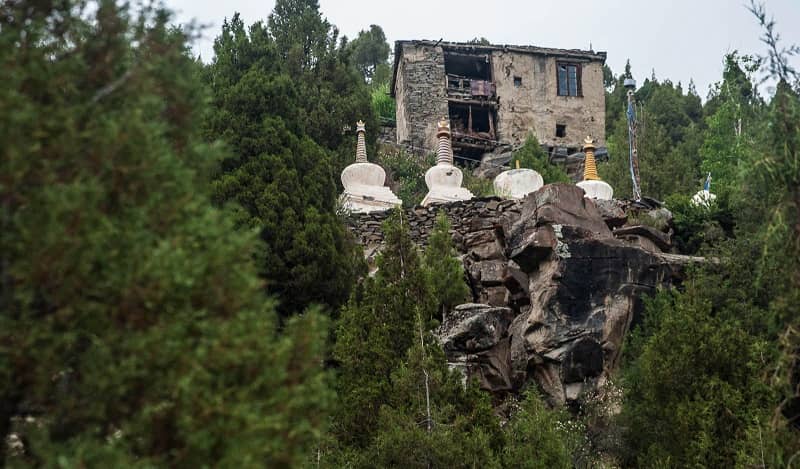
Shashur monastery boasts of its immaulate collection of large Thangka paintings (some being more than 15 feet) and wall paintings depicting all the 84 siddhas of Buddhism. In the months of June/July, the monastery also holds ‘cham’ which is a ritual dance.
ADVERTISEMENT
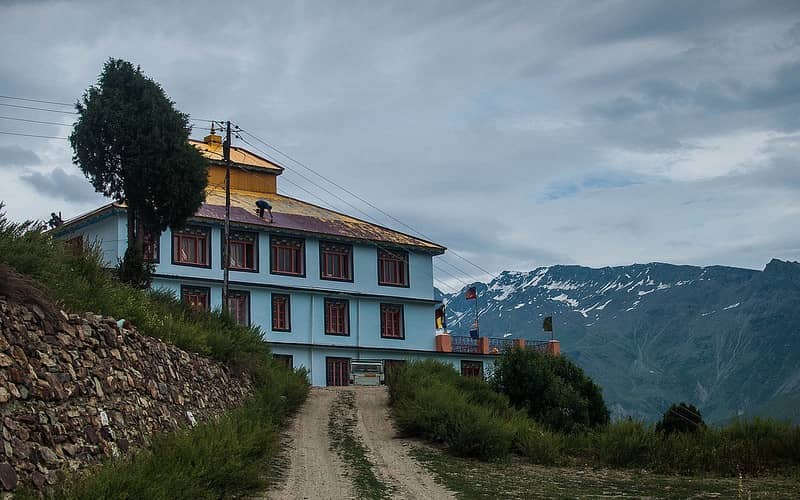
10. Tangyud Monastery
Also known as the Sa-skya-gong-mig Gompa, this monastery is located at an altitude of 4,520 metres in the village of Komic in Spiti region. The monastery is built like a fortified castle on the edge of a deep canyon, with massive slanted mud walls and battlements with vertical red ochre and white stripes. The stripes give a taller look to the gompa. It is considered to be one of the highest altitude gompas in India and overlooks the town of Kaza in Spiti.
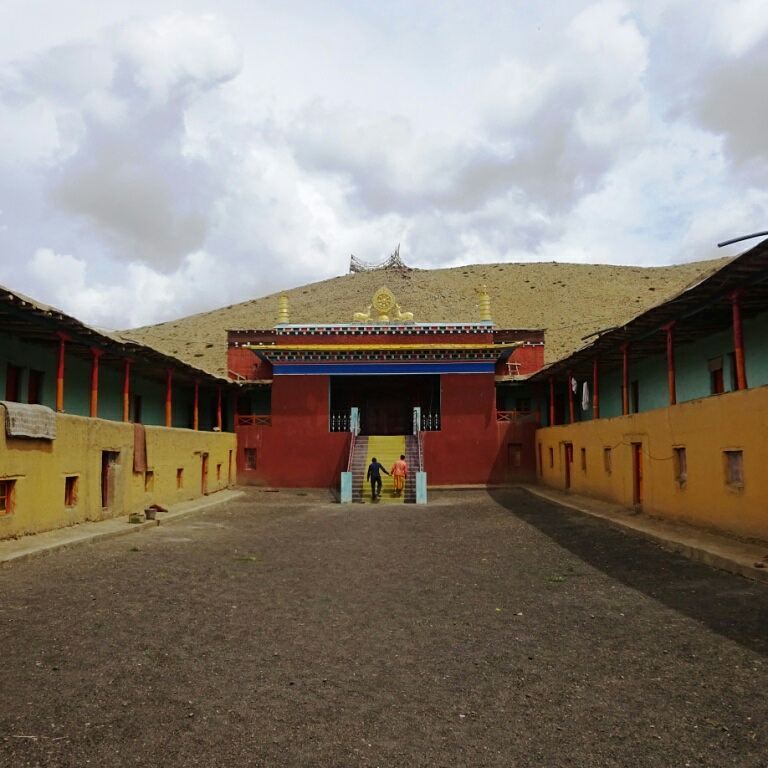
The monastery belongs to the Sakya sect of Buddhism, along with one in Kaza which is relatively insignificant and is believed to have been built in the early 14th century. It is located on the periphery of the Kibber Wildlife Sanctuary.
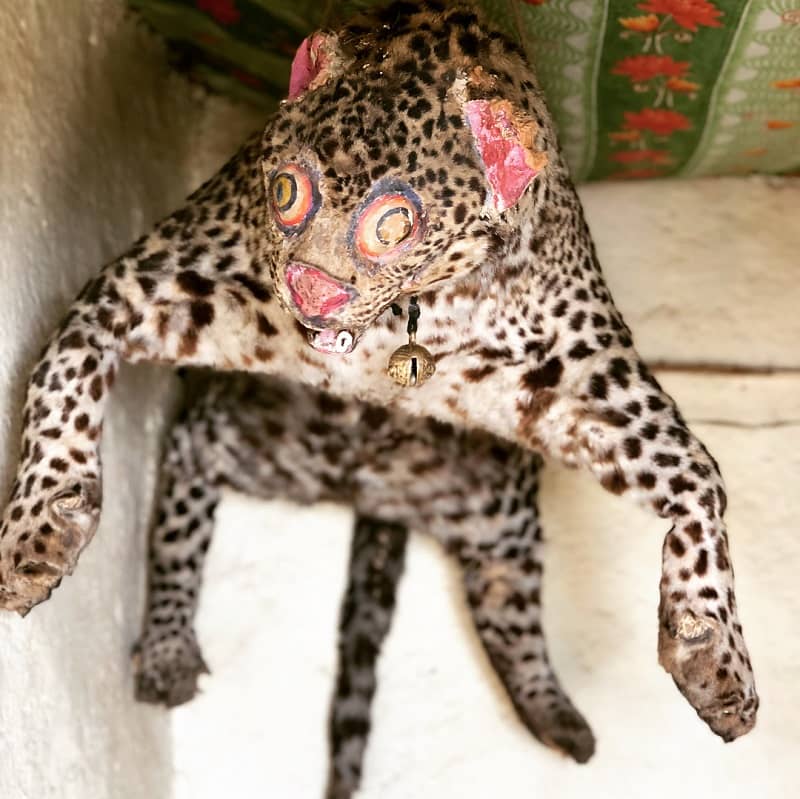
11. Dhankar Monastery
Bearing one of the most beautiful locations in the world, Dhankar monastery sits on a 1000 feet high spur overlooking the confluence of rivers Spiti and Pin, in the village Dhankar. Its name literally translates into ‘cliff-fort’. The monastery is located on an elevation of 12,774 feet and was built as a fort monastery on the Central Tibetan pattern. Along with this gompa, the new Dhankar Monastery lies just below it in the village of Shichilling and is home to around 150 monks belonging to the Gelug school of Tibetan Buddhism.
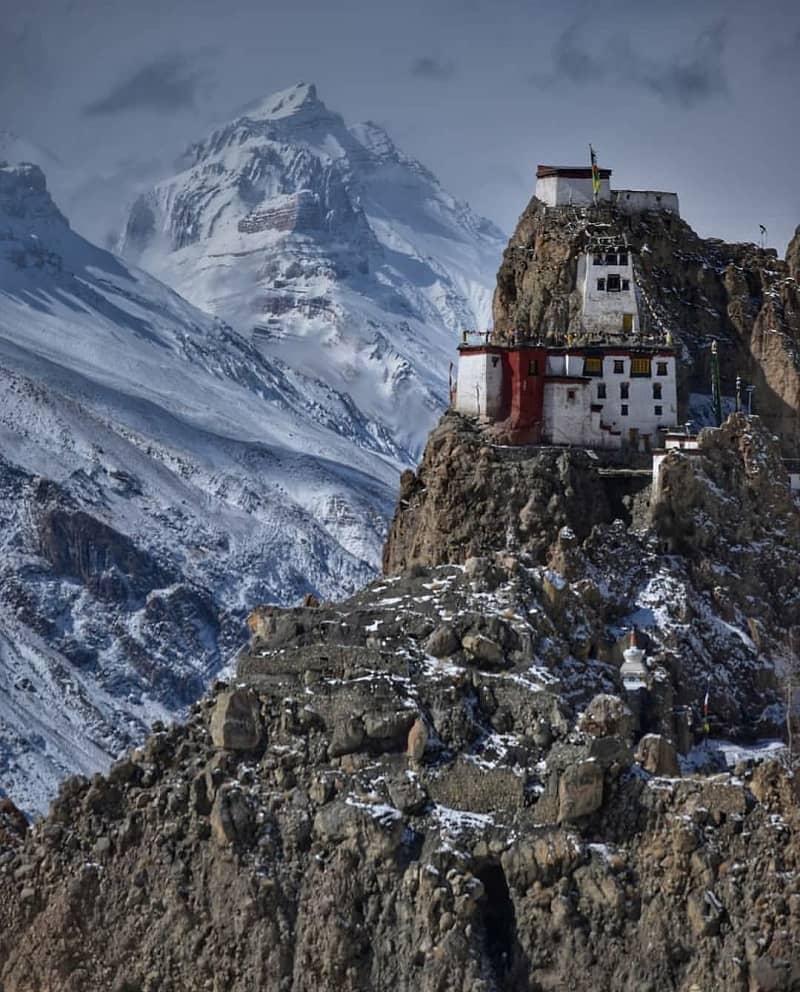
In 2006, the Dhankar gompa has been selected by the World Monuments Fund as one of the 100 most endangered sites in the world. The monastery is home to a small museum, various thangkas and a remarkable statue of Vairocana consisting of four figures seated back to back. Dhankar monastery is approachable by a motorable road, preferably by small vehicles.
ADVERTISEMENT
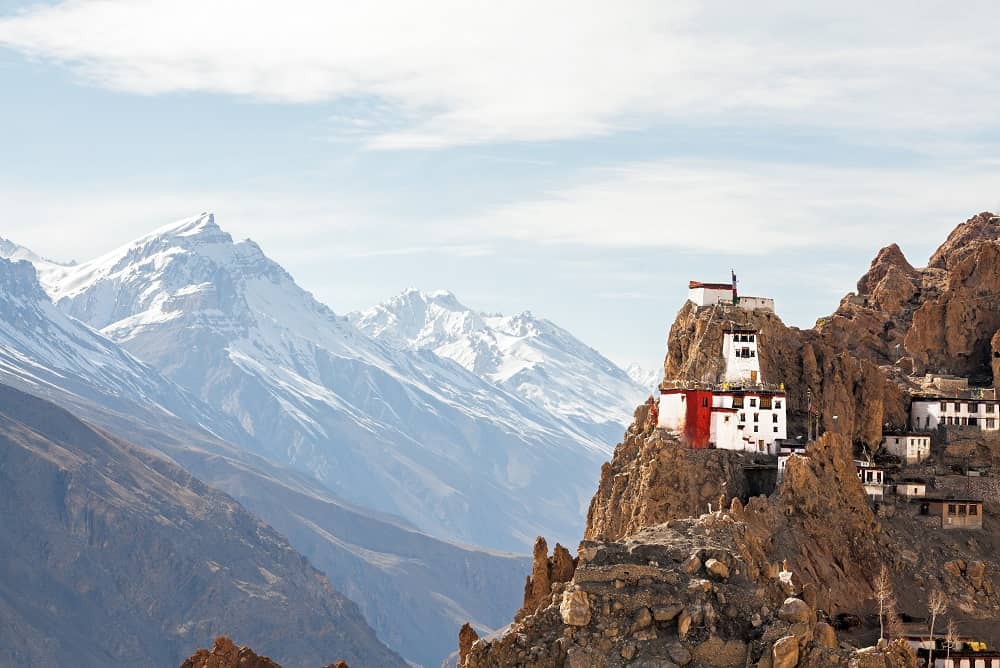
The monasteries are perfect places to get away from the world and lose yourself in tranquility and find yourself simultaneously. The Buddhist culture has more to it than just chants and the mask dances. Not only do these monasteries give a better understanding about Buddhism but also provide you with a unique kind of solitude set in a perfect scenery. So next time you plan a trip to the region of Lahaul-Spiti, do no forget to explore the monasteries!
Also read- 10 Monasteries In Leh Ladakh That Is A Must Visit For Peace Seekers
ADVERTISEMENT











